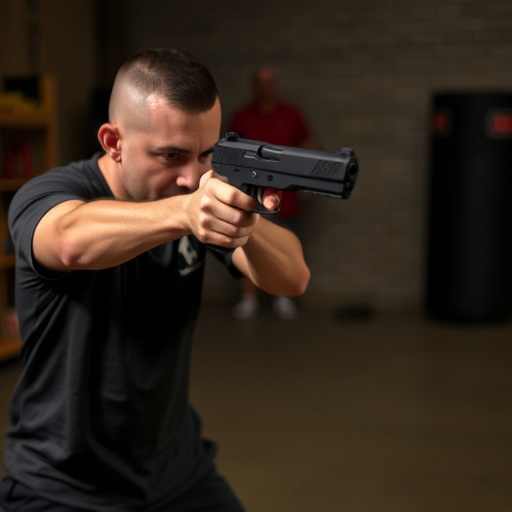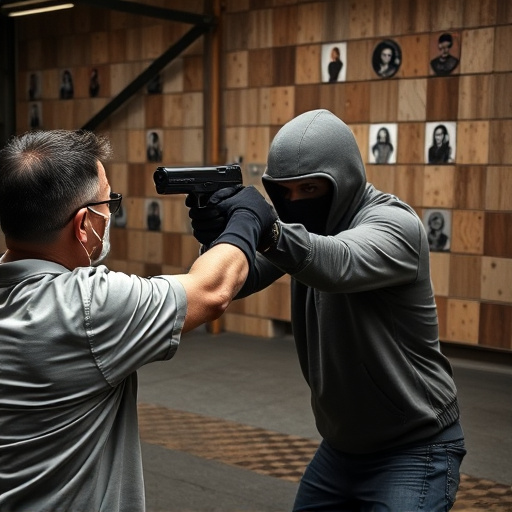Mini stun gun keychains for everyday carry leverage electrical current, particularly the flow of electrons, to deliver powerful shocks that temporarily incapacitate targets. These compact devices integrate high voltage and rapid electron movement between electrodes, balanced with strategic control of voltage and resistance to ensure effectiveness without causing severe harm. Key features include easy-to-access pressure-sensitive buttons, adjustable current output levels, and safe handling practices crucial for mitigating risks while complementing situational awareness and self-defense training.
In today’s world, personal safety is paramount. Electrical current flow plays a crucial role in the functionality of stun devices, particularly compact and convenient options like mini stun gun keychains tailored for everyday carry. Understanding how electric current animates these tools is essential to appreciating their design, operation, and safety considerations. This article demystifies the electrical principles behind stun devices, exploring various types, voltage, resistance, and safety precautions to empower users with knowledge.
- Understanding Electric Current: The Basis of Stun Device Functionality
- How Mini Stun Gun Keychains Operate: A Simple Breakdown
- The Role of Voltage and Resistance in Stun Device Design
- Exploring Different Types of Stun Devices and Their Current Delivery Mechanisms
- Safety Considerations: Managing Electric Shock Risks with Stun Devices
Understanding Electric Current: The Basis of Stun Device Functionality

Electric current, a fundamental concept in physics, is the flow of electrically charged particles, typically electrons, through a conductive material. In the context of stun devices, like the popular mini stun gun keychain designed for everyday carry, this flow of current serves as the core principle behind their functionality. These compact and powerful tools use electrical energy to deliver a strong shock, temporarily incapacitating a target.
The mini stun gun operates by applying high voltage across its electrodes, causing a rapid movement of electrons between them. This sudden influx of electric charge generates heat and disrupts muscle control in the target, resulting in a powerful stun effect. Understanding this basic electrical principle is key to appreciating how such devices can provide personal safety and serve as a deterrent in various everyday situations.
How Mini Stun Gun Keychains Operate: A Simple Breakdown

Mini Stun Gun Keychains for Everyday Carry operate on a simple yet powerful principle. These compact devices are designed to deliver a strong electrical current with a single touch, providing a quick and effective deterrent against potential threats. Inside each keychain lies a small battery-powered stun module, similar in structure to a mini flashlight. When activated, an electric current flows through two metal contacts on the device’s surface, creating a powerful shock that temporarily incapacitates the assailant.
The keychains’ design emphasizes ease of use and convenience for everyday carry. The stun function is triggered by a simple pressure-sensitive button, often located on the top or side of the keychain. This allows users to access protection swiftly without needing to manipulate complex mechanisms. Their small size and weight make them ideal for those who prioritize personal safety without sacrificing mobility.
The Role of Voltage and Resistance in Stun Device Design

In the design of a mini stun gun keychain for everyday carry, understanding the interplay between voltage and resistance is key. Voltage acts as the driving force behind electrical current flow, dictating the speed at which electrons travel through a circuit. Resistance, on the other hand, hinders this flow by creating an obstacle that electrons must navigate around. The strategic manipulation of these factors allows stun device manufacturers to control the intensity of the shock delivered, ensuring both effectiveness and user safety.
By adjusting the voltage and resistance levels, engineers can fine-tune the output of a mini stun gun keychain. Higher voltage generally results in a more powerful shock, while increased resistance can reduce current flow, lessening the impact on the body but still providing sufficient stun capability. This delicate balance is crucial for creating a device that packs enough punch to deter potential threats without causing severe or prolonged harm.
Exploring Different Types of Stun Devices and Their Current Delivery Mechanisms

Stun devices, a popular choice for personal safety, employ various mechanisms to deliver an electric current and incapacitate attackers. Among these, mini stun guns designed as keychain accessories stand out for their compactness and ease of everyday carry. These devices typically utilize a simple yet effective design where pressing a trigger releases a high-voltage, low-amperage electrical pulse. This pulse disrupts the attacker’s nervous system, causing muscle spasms and temporary paralysis.
Different types of stun devices offer unique current delivery systems. Some models employ a single metal prong or probe that makes contact with the target, while others incorporate multiple contacts for increased effectiveness. Advanced designs may include features like adjustable current output levels, allowing users to adapt the device’s power according to specific situations and legal restrictions. The mini stun gun keychain, in particular, leverages its compact design to deliver a swift and powerful shock without drawing unnecessary attention.
Safety Considerations: Managing Electric Shock Risks with Stun Devices

When considering a mini stun gun keychain for everyday carry, safety should be at the forefront of your mind. These devices deliver powerful electric shocks, which can cause significant harm if not used correctly. Understanding how electrical current flow works is crucial to mitigating risks associated with stun devices.
Proper training and awareness are essential. Users must learn safe handling practices, including keeping the device away from sensitive areas like eyes and vital organs. Additionally, ensuring proper charging and maintenance reduces the likelihood of malfunctioning, which could lead to accidents. Remember, while a mini stun gun keychain can serve as a deterrent, it’s not a substitute for situational awareness and self-defense training.
In conclusion, understanding electrical current flow is key to appreciating the functionality of stun devices, particularly compact designs like mini stun gun keychains aimed at everyday carry. From voltage and resistance dynamics to various delivery mechanisms, these tools leverage electric current to deliver powerful shocks. However, safety remains paramount; proper management of shock risks ensures these devices serve their purpose effectively while minimizing harm. For those seeking personal safety solutions, a well-informed understanding of stun device technology, including electrical current principles, is essential.
